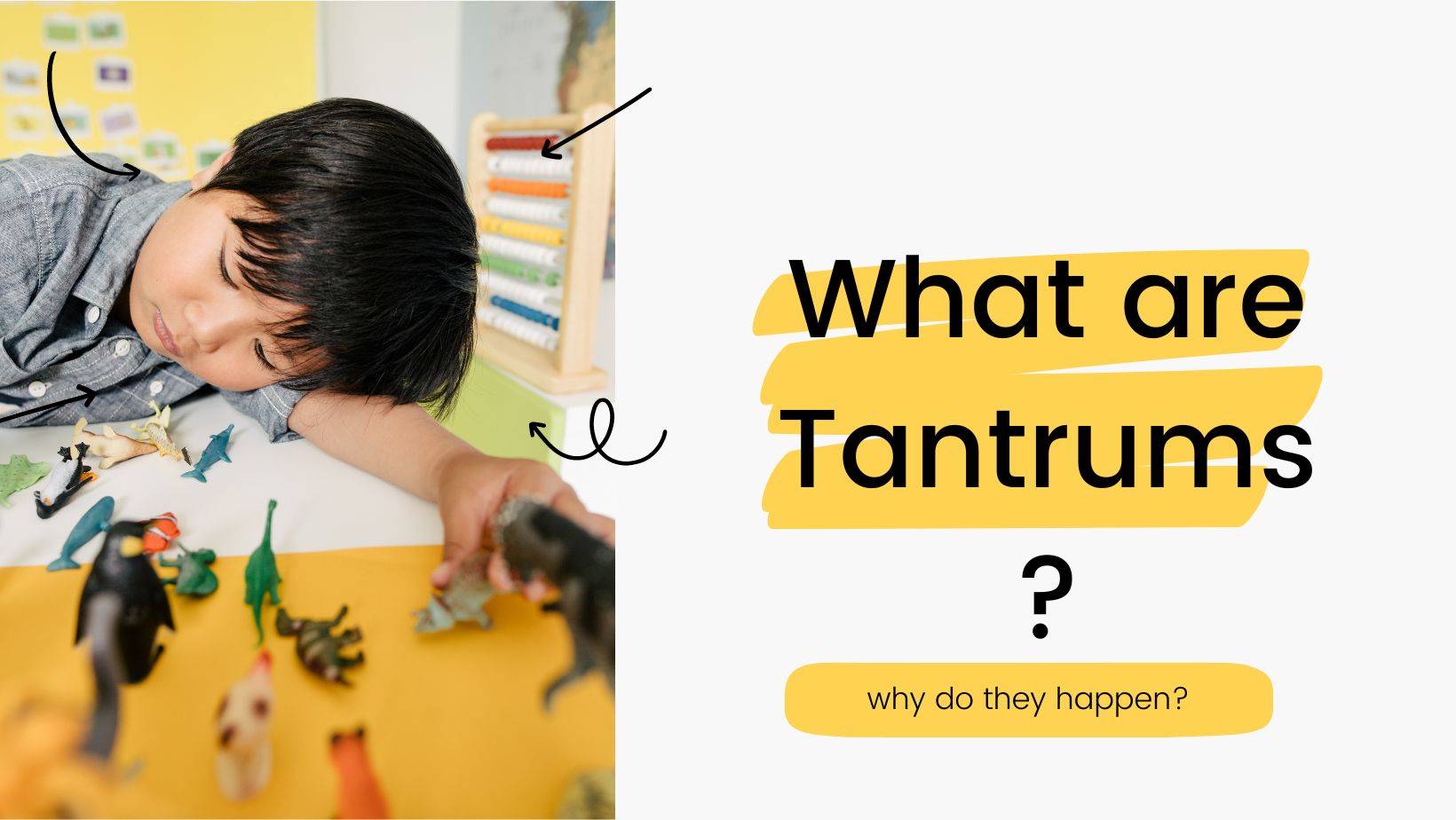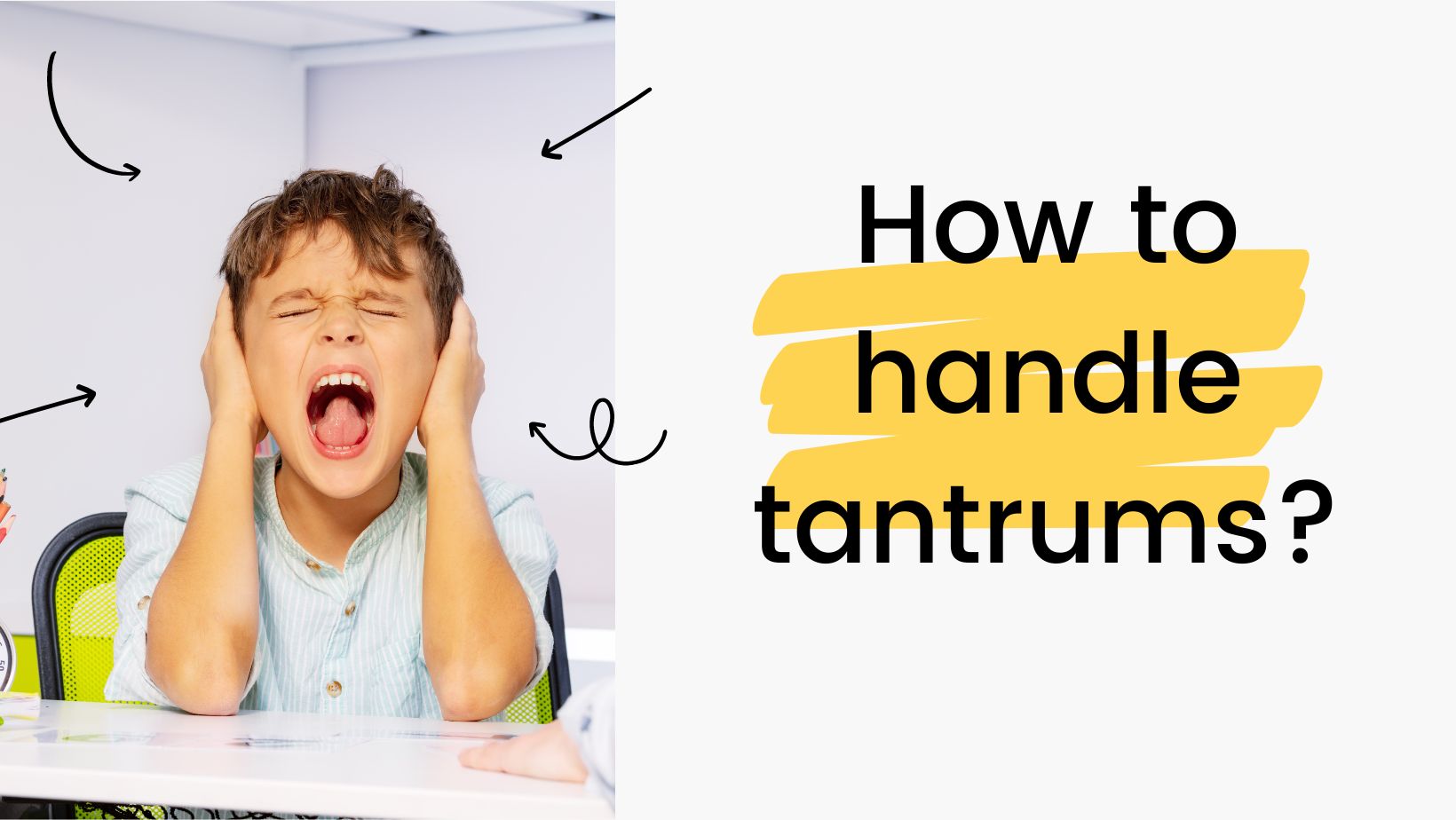Are you a parent dealing with a toddler’s tantrum? If so, you know that they can be an annoying and frustrating part of parenthood. It can be especially frustrating when the tantrum occurs in public, and other people are looking on disapprovingly.
To help you deal with your toddler’s uneven behavior that can happen at home or even in public, continue reading the blog. This blog will teach you the Montessori approach to handling a toddler’s tantrum.
What are Tantrums, and why do they happen?

The term “tantrum” refers to “an expression of anger or frustration by the child who finds it difficult to act freely.” Tantrums can be characterized by head-banging or screams, breathing-holding and flailing limbs, falling and rolling on the ground, etc.
Tantrums can occur in older children and adults, but these are more frequent between the ages of 18 months & three years of age – and the age of development in which children needs to be in control. It is, therefore, important that parents understand what is happening with their children so that they can respond effectively.
How to handle tantrums?

Be present and patient.
Remember that toddlers’ tantrums are never about you. They’re about their discomfort, and they’re not using words yet to tell us what it is. The best thing parents/caretakers can do for their children during a tantrum is to stay with them and be patient. Don’t try to talk or touch them instantly—let them feel you’re with them without engaging in conversation or touch.
When your toddler calms down, speak calmly and ask them how they feel now. If the issue was hunger, fatigue, or some other need-based reason for the tantrum, offer reassurance and understanding before moving on with your day.
Acknowledge their feelings
It is important for parents to first acknowledge the child’s feelings, including sadness and anger. Parents should then work on problem-solving strategies with their children to help them deal with the situation more effectively. These strategies may include using words instead of actions when upset, taking deep breaths and counting before they act, or asking themselves if what they want will make them feel better in the long run.
Help your child calm down.
One way to help your child calm down is by offering them a hug or cuddle; being close can help reassure them and make them feel better. Stroke their back gently while they hold them tight and kiss their forehead. Remember not to scold the child for the tantrum, but rather stay calm and empathize with their feelings to try and show them that you understand how hard it is for them.
Don’t rush it
When your toddler has a tantrum, it is tempting to rush in and try to get the situation under control. But for parents, this can be counterproductive. Instead, take some time out and let the child calm down on their own. This way, you can maintain your composure and keep the situation from escalating.
Ask them what’s the issue.
Toddlers are likelier to throw tantrums when tired, hungry, or frustrated. Understanding what your child needs & providing the same will help you avoid tantrums. You can soothe the toddler with a cuddle, soft music, and reassuring words.
If your toddler is throwing tantrums because of nap time, try having them take an earlier nap in the afternoon. Or, if they’re tired from playing too hard outside during the day, put them down for an early evening nap.
Sometimes distractions are needful.
The key is to distract your child with something else, whether another activity or an object. The goal is for the child to regain self-control and return their focus on you and the task at hand. You can offer something that reminds the toddler of when they were happy, such as a favorite toy or snack, or maybe bring them somewhere familiar, like their bedroom, where they may remember happier times.
The bottom line
A toddler tantrum can seem like an insurmountable obstacle. Parents of toddlers often feel embarrassed, angry and frustrated by the tantrums. However, there is a way to navigate tantrums that will help your toddler learn how to handle their emotions while creating positive moments between you and your child.
Make sure to observe every child’s behavior so dealing with it can be easy.



